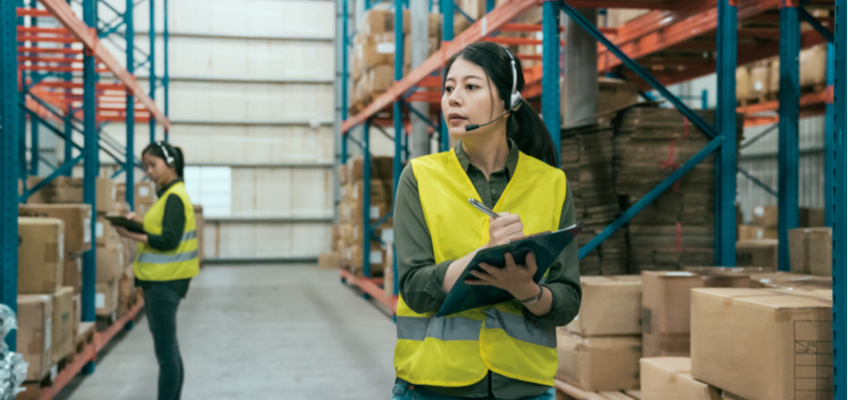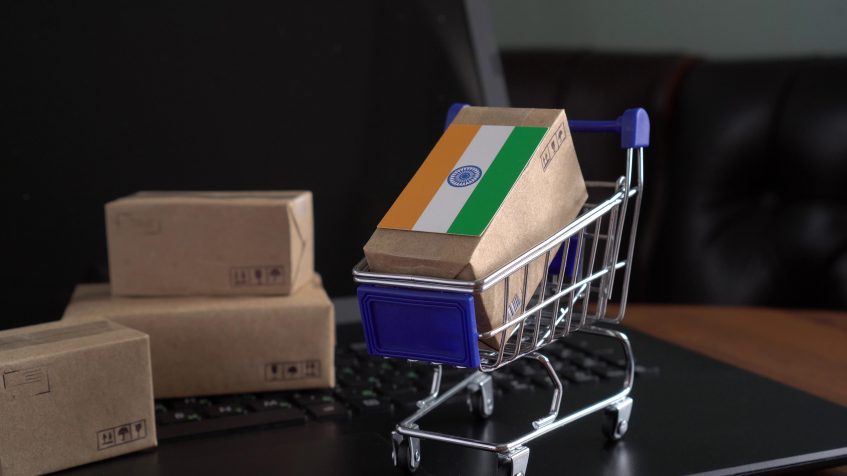
Learnings From China: The Next Frontier in eCommerce
If you’re involved in eCommerce, whether as a vendor, a marketer, or even a consumer, you’ve probably noticed that Chinese sellers usually have the best prices and the highest volume of goods. It’s something that Shawn Zhao, co-founder and CEO of Etailerhub, often has to explain. When he goes to eCommerce events and exhibitions, he’s frequently asked: “Why are Chinese sellers selling so many products at such low prices?”
Typically, Zhao answers using the following statistics about Chinese sellers in the global eCommerce export market:
- In 2021, China’s export and eCommerce market grew to be worth $2.1 trillion and could be worth $3.3 trillion by 2025
- 30% of all sellers across all global eCommerce platforms are Chinese.
- Chinese sellers usually have more product volume than sellers from other countries on the same platforms. For example, Chinese sellers make up more than 63% of Amazon’s third-party sellers.
- In 2020, 83.4 billion parcels were shipped from China to overseas customers, and that doesn’t include Amazon’s FBA sales.
- 38% of eCommerce orders worldwide are shipped from China.
In his talk at the Payoneer forum in India, Zhao discussed how Chinese vendors are selling so many products at such low prices, how Indian eCommerce businesses can compete, and how his HyperSKU solution can help them access the same capabilities as Chinese sellers. His full presentation can be seen below:
How Do Chinese Sellers Achieve Such High GMV?
According to Zhao, high GMV relies on 4 elements:
More SKUs, more sales channels, more marketplaces
- Fast product turnover, fast product updates, fast delivery
- Good quality products, good customer service
- Savings on time, cost, and effort for cross-border sellers
Chinese sellers enjoy these cross-border eCommerce advantages, which boost all 4 elements of a high GMV:
- A robust infrastructure so they can quickly expand into new marketplaces, bringing in more traffic. China boasts free academies that teach manufacturers and vendors how to sell online, software solutions that help sellers manage thousands of products across hundreds of storefronts, online payment solutions, and working capital services that enable sellers to scale up their business.
- Chinese B2B and B2C product platforms
- High flyer exhibitions held every week in different cities in China. These exhibitions host manufacturers and sellers so that sellers can inspect physical products and give feedback to manufacturers about how they can be improved. This allows for more SKUs, fast product turnover, and high product quality.
- An excellent logistics network. Smaller eCommerce products are consolidated in a few hub cities in China with national distributors. eCommerce sellers ship items to Hong Kong, which are then shipped around the world. It can take just seven days to ship a product from China to a consumer in Europe or the US, for example. Large equipment, furniture, and heavy tools are stored in regional warehouses worldwide, and from there they can reach nearby destinations in three days. Between the two solutions, Chinese sellers can offer good and speedy fulfillment with full tracking visibility, at low effort and cost.
As a result, there is a huge cost structure gap between Chinese and non-Chinese eCommerce sellers. For example, Zhao showed the same dress for sale on a foreign site for $36, but on a Chinese site for $8.60. This isn’t because the Chinese sellers are losing money, but because their cost structure means they can still make a profit on much lower prices.
How Can Indian Cross-Border Sellers Compete With Their Chinese Counterparts?


Zhao highlighted specific opportunities for Indian cross-border sellers to compete with Chinese sellers.
Social Commerce
While the Chinese are really good at efficient sales operations, they are not very good at social selling. Less than 50% of their marketing budget goes on social marketing like native ads, display ads, influencer marketing, etc. Barely 2% of it goes on email marketing. Indian eCommerce businesses have a big opportunity for social sales and email-driven sales campaigns.
Creative Marketing
Chinese cross-border sellers have little awareness of Google ads, Facebook ads, YouTube videos, influencer marketing, creatives, branding, or ad design.
This is due to both language and cultural barriers, plus the Chinese government bans them from using Google and many other platforms. Within Zhao’s Etailerhub ecosystem, fewer than 10% of sellers speak English. It’s rare for Chinese cross-border sellers to travel abroad, meet people from other cultures, or discover buyer behavior in other countries.
Whoever Owns the Traffic, Owns the Profit
As a result, Chinese sellers rely heavily on marketplaces to bring in traffic. Zhao summed it up like this:
“Chinese sellers know products. sellers know traffic.”
Chinese sellers know how to optimize product selection and product turnover. But non-Chinese sellers know how to use ad creatives, branding, language, and design to drive traffic to make sales.
Zhao concludes that India is home to the perfect combination of Chinese and non-Chinese traits. Indian cross-border sellers know how to make and select products, but also know how to drive traffic through branding and design. As he comments, whoever owns the traffic owns the majority of the profit.
Cross-Border Dropshipping Opportunities


Zhao recommends that Indian eCommerce businesses adopt dropshipping. As a reminder, dropshipping involves opening an online store, using creative advertising to drive traffic to your store, then sending orders to the vendor to be fulfilled and supplied directly to the consumer.
The advantages of dropshipping include:
- No inventory, since you only buy stock after a customer makes an order.
- No fulfilment hassles, because fulfilment is handled by the vendor.
- Low barrier to entry, since all you need is a Shopify or other eCommerce storefront.
- Easy to adjust, because you have no fixed infrastructure or inventory. This allows you to expand into new territories, change product categories, store design, and more, depending on demand.
Zhao’s recommendations for getting started on cross-border dropshipping include:
- Finding your product niche.
- Planning your advertising. Think of creative ideas, prepare high quality images and product content.
- Testing your social traffic.
- Finding a trustworthy supplier (this is very important!).
- Building customer loyalty through excellent customer service.
Don’t feel defeated by the product sourcing capabilities and logistics infrastructure of Chinese eCommerce sellers. Instead, use your abilities, together with HyperSKU, to level the playing field.
HyperSKU Helps Make Dropshipping Easier
On the back-end, HyperSKU is integrated with thousands of pre-vetted Chinese manufacturers and suppliers. It holds over one million product SKUs, including English product descriptions and high-quality product images.
On the front-end, HyperSKU integrates with Shopify and WooCommerce. In just a few clicks, you can find and add products from the backend catalog to your eCommerce store and start making sales.
HyperSKU includes over 200 global shipping solutions. shipping, with a full tracking service so that both you and the customer know the product’s exact location.
HyperSKU aims to give global sellers the same cost structure, sourcing capability, and shipping infrastructure as Chinese sellers, in order to flatten the pricing gap. You’ll bring your expertise in SEO, marketing, and customer loyalty, along with your knowledge of the local market. HyperSKU brings the product knowledge of Chinese sellers.
Editor’s note: This post was updated on 2.2.22




